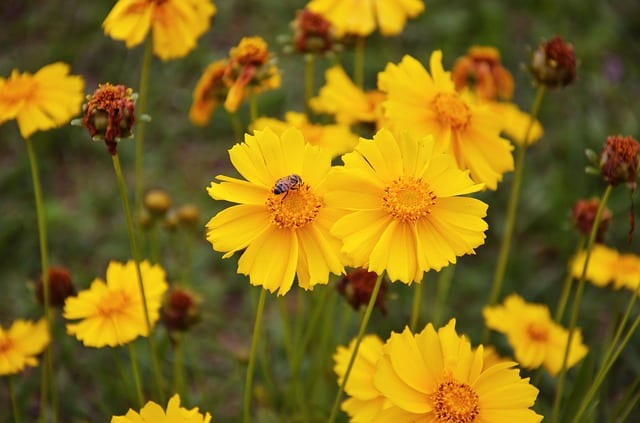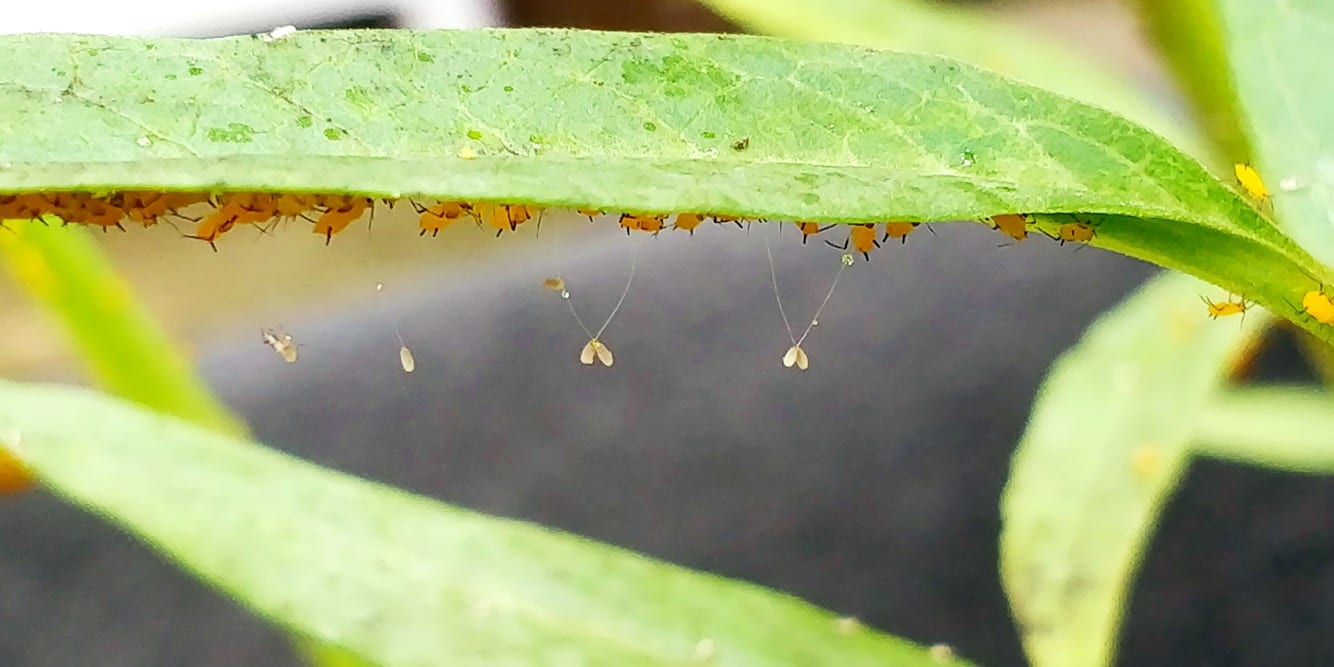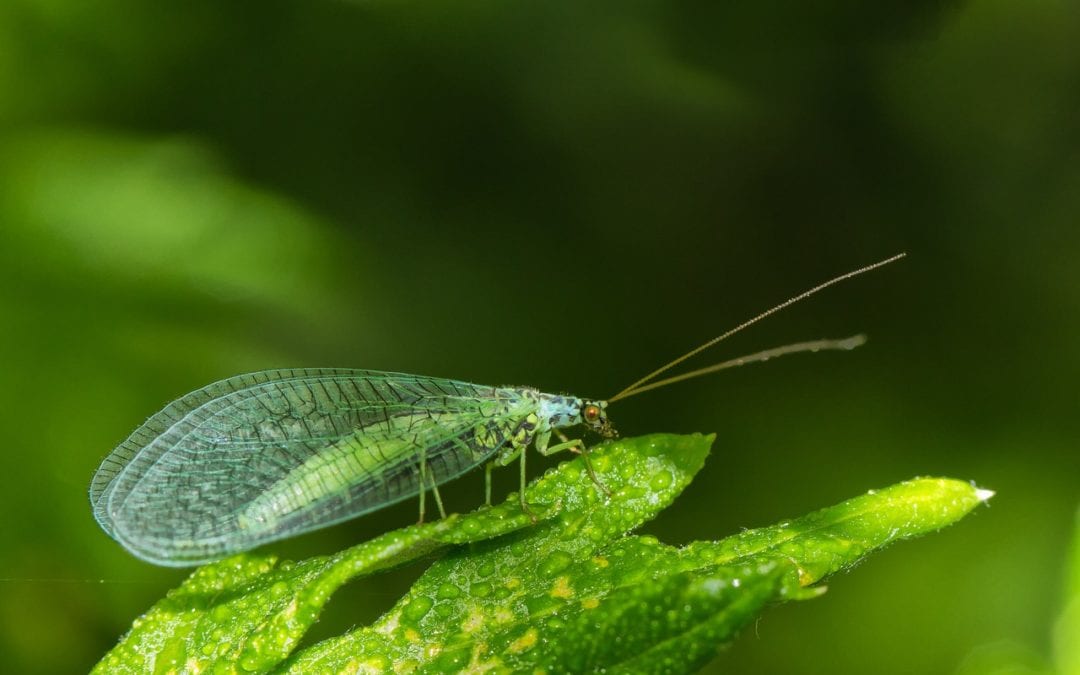Most gardeners have heard of using ladybugs to fight off aphids, but not everyone knows about lacewings. These two beneficial insects are powerhouses when it comes to battling aphids. It’s just a fact that milkweed and aphids go hand in hand. Aphids love to congregate on milkweed like little yellow taxi cabs on a busy New York street! You find yourself in quite a predicament when your milkweed becomes infested. A typical pesticide will kill off the aphids, but it will also kill off the monarch eggs, and larvae that you purposely bought your milkweed to feed! So what do you do?
Inviting beneficial insects like ladybugs and lacewings into your garden with plants they are attracted to is a great start. Plants that attract beneficial insects like lacewings include: dill, oregano, cosmos, coreopsis, asters, sweet alyssum, verbena, daisies and more. While ladybugs are usually available in the nursery during the spring for purchase, lacewings will usually just show up in the garden in the nick of time. Some species of lacewings show up more abundantly in spring, and some more abundantly in fall. The key is to know what to look for so you know that lacewings have arrived to help you with your pest control.

Plants like coreopsis attract beneficial insects like lacewings.
Before you decide to blast water from a hose to dislodge aphids (a valid means of controlling aphids), look all over the plant for signs of lacewings moving in. Lacewings lay their eggs on the underside of plant leaves. Tiny, and I mean tiny, white eggs dangle from the thinnest threads. These lacewing eggs are very easy to overlook so good observation is key.


The next stage you might notice are little creatures that look like tiny alligators. That’s the best way I can describe lacewing larvae. The larvae of the lacewings are what do the dirty work, or rather, clean work. Lacewings pierce their prey and suck out their juices with their long, sharp, mouthparts. They can clean your milkweed free of aphids, literally overnight. Lacewings are nocturnal predators, so you could see them living amongst aphids on your milkweed one day and have an aphid-free milkweed by morning. By the way, lacewings can also slurp up other pests like thrips, mealybugs, scale, whiteflies, leafhoppers and more.


This time of quarantine, when we are ordered to stay at home, might be a good time to be able to really observe your gardens. Don’t swat away the insects that fly around your head while gardening. Are the insects in your garden really pests or beneficial insects? Is there a reason pests are attacking your plants? Could your plants be weak or damaged, inviting the pests? Notice how each insect has a role in your garden. Pests, while sometimes damaging, are also a food source for beneficial insects.
Seeing lacewings in action has reaffirmed my preferred gardening attitude of letting nature take its own course. So what I am essentially saying is, don’t sweat the small stuff because the small stuff (lacewings) out there is pretty amazing, and it can help you out big time!
~The Happy Gardener, Lisa Mulroy


I started setting my milkweed pots, herb pots w/dill, rosemary etc. among my butterfly nectar flower beds & added a ladybug lure and within 2 weeks my milkweed plants were cleaned. I learned that wasps don’t like strong smells like mint & lavender so I added those too, I’m happy to say they’re staying away & my caterpillars are doing great..
Hi Lory!
so happy to hear that your butterfly garden sounds like it is doing what it does best! Hope many butterflies visit you this fall and every season!
Are you sure that Lacewing don’t also scarf up tiny caterpillars?
Hi Jan,
There is a possibility that lacewings will eat the tiny eggs and caterpillars, just as ladybugs and ladybug larvae do as well. However, with aphids being their #1 choice of food, we still think they are a better option than pesticides when trying to have a butterfly garden.